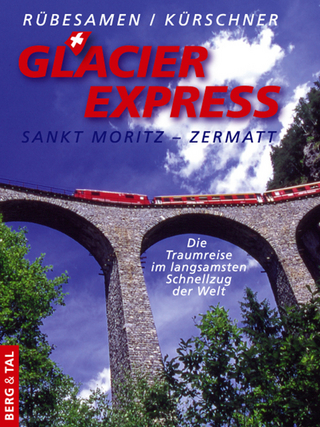
The Fifties Railway
Seiten
2018
Amberley Publishing (Verlag)
978-1-4456-7919-8 (ISBN)
Amberley Publishing (Verlag)
978-1-4456-7919-8 (ISBN)
The decade of crimson and cream coaches and black and red locomotives, the 1950s was a decade of renewal and optimism on Britain’s rails, here encapsulated by Greg Morse in full colour.
Under-maintained and over-worked during the Second World War, Britain’s railways emerged from the conflict carrying a ‘poor bag of physical assets’. Yet the new government of 1945 saw a need to bring the nation’s great industries into public ownership – a move that saw the creation of a single railway network three years later. At first, it seemed like ‘business as usual’, but as the 1950s dawned and BR’s deficit grew deeper, it was clear that costs needed to be cut wherever possible. And that meant modernisation.
Published at the very end of 1954, the so-called Modernisation Plan would see the ordering of over 170 diesel locomotives and the launch of a bold plan to electrify much of the West Coast Main Line. The downside for enthusiasts and traditionalists was the beginning of the end for steam, though the path to modernisation would not run smooth; neither would it come cheap. The decade would end much as it had begun – with a new government seeking ways to save money. Doctor Beeching was on his way.
This book is part of the Britain’s Heritage series, which provides definitive introductions to the riches of Britain’s past, and is the perfect way to get acquainted with the Fifties Railway in all its variety.
Under-maintained and over-worked during the Second World War, Britain’s railways emerged from the conflict carrying a ‘poor bag of physical assets’. Yet the new government of 1945 saw a need to bring the nation’s great industries into public ownership – a move that saw the creation of a single railway network three years later. At first, it seemed like ‘business as usual’, but as the 1950s dawned and BR’s deficit grew deeper, it was clear that costs needed to be cut wherever possible. And that meant modernisation.
Published at the very end of 1954, the so-called Modernisation Plan would see the ordering of over 170 diesel locomotives and the launch of a bold plan to electrify much of the West Coast Main Line. The downside for enthusiasts and traditionalists was the beginning of the end for steam, though the path to modernisation would not run smooth; neither would it come cheap. The decade would end much as it had begun – with a new government seeking ways to save money. Doctor Beeching was on his way.
This book is part of the Britain’s Heritage series, which provides definitive introductions to the riches of Britain’s past, and is the perfect way to get acquainted with the Fifties Railway in all its variety.
Greg Morse was instilled with a love of trains at an early age. Growing up in the Great Western town of Swindon in the 1970s, he witnessed the end of the celebrated diesel-hydraulics and the birth of the Inter-City 125s. He has written many articles and books on railway history and is now privileged to work for the industry he loves as an Operational Safety Specialist.
| Erscheinungsdatum | 18.09.2018 |
|---|---|
| Reihe/Serie | Britain's Heritage |
| Zusatzinfo | 80 Illustrations |
| Verlagsort | Chalford |
| Sprache | englisch |
| Maße | 165 x 234 mm |
| Gewicht | 190 g |
| Themenwelt | Natur / Technik ► Fahrzeuge / Flugzeuge / Schiffe ► Schienenfahrzeuge |
| Geschichte ► Allgemeine Geschichte ► Neuzeit (bis 1918) | |
| Geschichte ► Teilgebiete der Geschichte ► Kulturgeschichte | |
| ISBN-10 | 1-4456-7919-1 / 1445679191 |
| ISBN-13 | 978-1-4456-7919-8 / 9781445679198 |
| Zustand | Neuware |
| Haben Sie eine Frage zum Produkt? |
Mehr entdecken
aus dem Bereich
aus dem Bereich
St. Moritz – Zermatt : die Traumreise im langsamsten Schnellzug der …
Buch | Hardcover (2023)
Verlag Berg & Tal
14,95 €
Betriebsmaschinendienst, Einsatz bei den Bahnbetriebswerken und …
Buch | Hardcover (2024)
EK-Verlag
54,00 €
Buch | Hardcover (2023)
GeraMond (Verlag)
27,99 €


